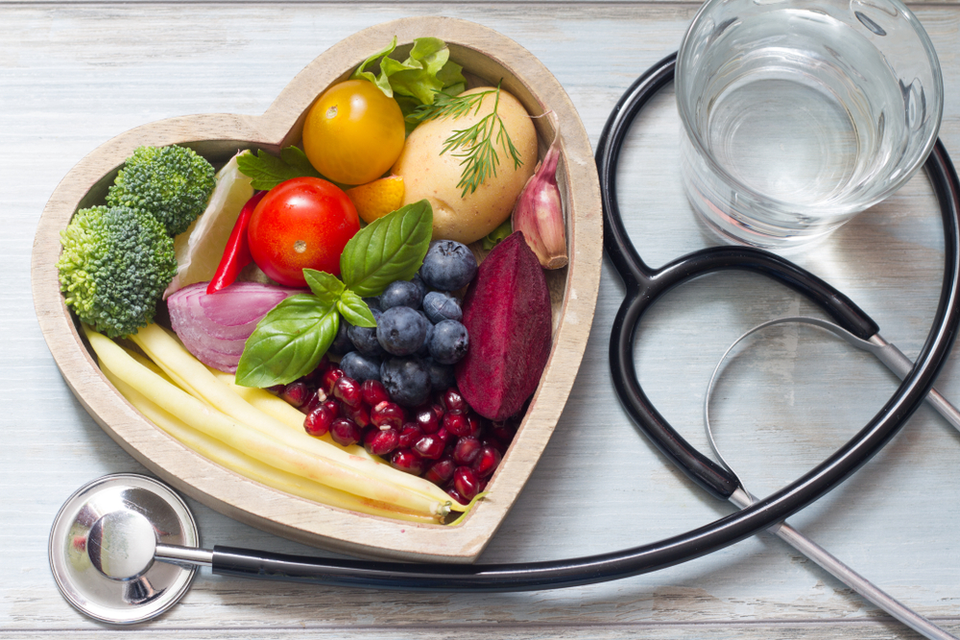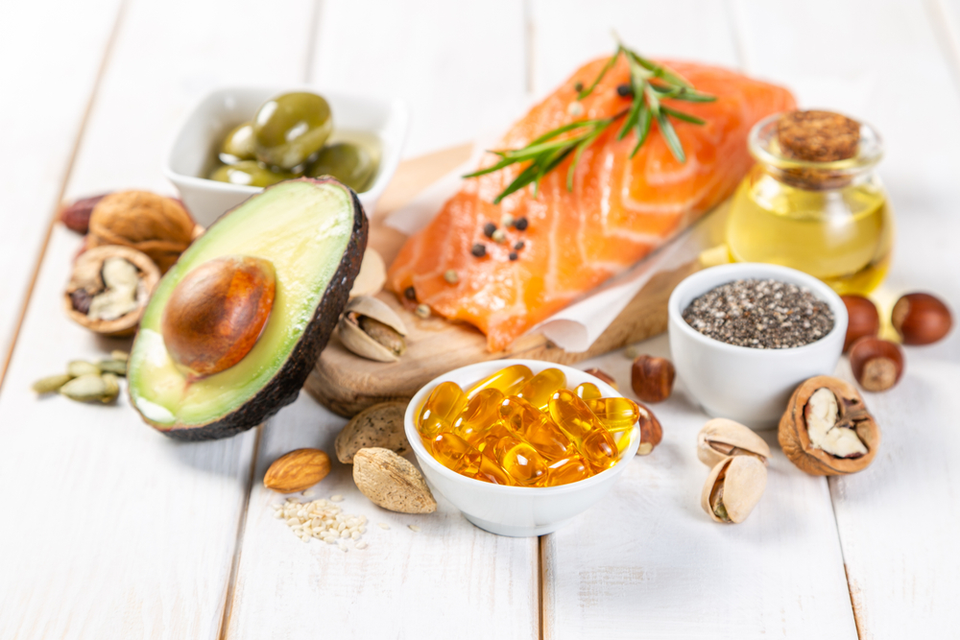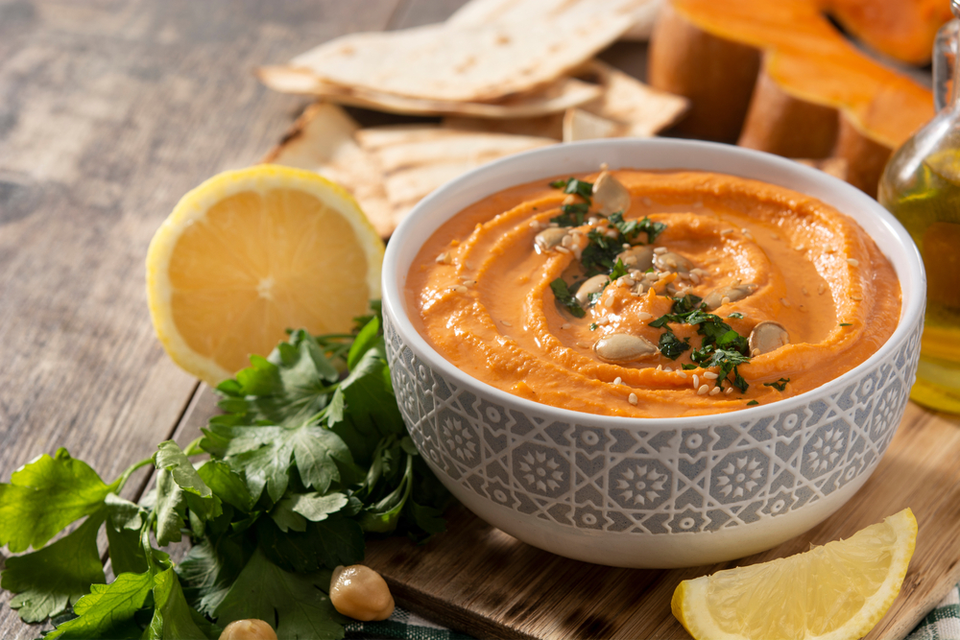With cardiovascular disease being the number one cause of death in the U.S.,1 it's important to find and consume foods that support cardiovascular health. The top three heart-health components we can impact with nutrition include blood pressure, cholesterol, and inflammation.
The Mediterranean Diet and DASH Diet have long been the go-to heart-healthy diets recommended in the medical world.2 The Mediterranean diet focuses on general cardiovascular health and potentially weight loss and inflammation reduction.10 Meals consist of vegetables, fruits, nuts, seeds, legumes, whole grains, fish, and olive oil while minimizing red meat, processed food, added sugars, and refined oils.2, 10
The DASH (Dietary Approaches to Stop Hypertension) diet was designed to lower systolic blood pressure by up to 14 mm Hg.6 The DASH diet emphasizes minimizing sodium, alcohol, and dietary fats while ensuring adequate intake of calcium and magnesium.6 With one teaspoon of salt containing 2,325 mg of sodium, and the DASH diet only allowing 2,300 mg per day, people reach the upper limit quickly, particularly if including any processed foods or supplements.6 Like most diets, however, neither the Mediterranean nor the DASH diet is sustainable for most active people.2
Jumping from diet to diet in attempts to attain ideal health leads to frustration and disappointment. Instead, why not start by diversifying your plate to include foods that contribute to heart health?
Foods that Lower Cholesterol
Nutrition to lower cholesterol begins with getting enough fiber. The average adult needs 20-35 grams of fiber per day.3 This doesn't mean you need to start guzzling prune juice. Instead, try oats, beans, eggplant, nuts, apples, grapes, berries, soy, or supplements that contain soluble fiber, sterols, or stanols.
Foods That Lower Blood Pressure
Nutrition to lower blood pressure includes foods high in calcium, potassium, and magnesium while minimizing sodium.2,6 The National Institute of Health recommends 1,000 mg calcium, 2,600-3,400 mg potassium, and 310-420 mg of magnesium per day for the average adult.7-9 Micronutrients can be hard to keep track of, as they come from many food and supplement sources throughout the day. Test awareness of your intake by using a food-tracking app. Track every food, beverage, and supplement you consume for 3-7 days. See what your average for calcium, magnesium, and potassium are. If you find that you are tracking below average, add more foods to supplement the missing micronutrients.
Foods high in calcium, magnesium, and potassium include green, orange, and red fruits and vegetables; Greek yogurt, low-fat cottage cheese, nuts, and seeds.4
Anti-Inflammatory Foods
Nutrition to lower total body inflammation focuses on omega-3, vitamin D, amino acids, antioxidants, prebiotics, probiotics, and polyphenols.10 Omega-3 is found in salmon, tuna, sardines, nuts, and olive oil.5 Most people do not consume adequate amounts of food containing omega-3, and therefore benefit from Omega-3 (EPA and DHA) supplements.
Vitamin D deficits are quite prevalent, as the recommended dose for adults is 600 IU daily.11 Fitness enthusiasts practicing "clean eating," may actually have difficulty getting enough vitamin D from daily food sources. Foods that are high in vitamin D include fortified milk, fortified cereal, salmon, tuna, mackerel, and fish liver oil.11 While skin can synthesize vitamin D from sunlight, many who have access to adequate sunlight also need to wear sunscreen for UV ray protection. This makes vitamin D supplementation a consideration for many who wish to maximize their health. Vitamin D is a fat-soluble vitamin, meaning that the body can store it. This is why working with a medical provider to monitor your levels is suggested.
Amino acid studies have focused on leucine as the primary inflammatory amino acid,11 which is found in whey protein, soy protein, brown rice protein isolate, poultry, tuna, salmon, trout, dairy products, soy, seaweed, legumes, and brown rice.10,12 Generally, anti-inflammatory meals do not necessarily have to be focused on a specific nutrient. Choose foods like leafy greens (i.e. spinach and kale), tomatoes, berries, cherries, oranges, salmon, tuna, sardines, nuts, and olive oil to help reduce inflammation.5,10
Summary
If you are an active, healthy, fitness enthusiast, the perfect recipe for heart health does not require you to follow a specific heart-healthy diet. Instead, focus on regularly including a variety of foods, such as those shared in this article, to help decrease cholesterol, blood pressure, and inflammation.
------------------
About the Author: Dr. Meredith Butulis is a Sports Medicine Physical Therapist, NSCA Certified Strength and Conditioning Coach, ACSM Certified Exercise Physiologist, NASM Certified Personal Trainer, and Precision Nutrition Certified Nutrition Coach in practice since 2002. She consistently walks the talk as a fitness, physique, and OCR world-level competitor and lifestyle transformer since 2006, celebrating many wins along the way. Want more total fitness lifestyle inspiration and interaction? Follow Dr. Meredith on Instagram @Dr.MeredithButulis or join the free "Fitness Focus Fuel" Facebook Group.
------------------
References:
- CDC. (2020). Heart disease facts. Retrieved from https://www.cdc.gov/heartdisease/facts.htm
- Ravera A, Carubelli V, Sciatti E, et al. Nutrition and Cardiovascular Disease: Finding the Perfect Recipe for Cardiovascular Health. Nutrients. 2016;8(6):363. Published 2016 Jun 14. doi:10.3390/nu8060363. Retrieved from https://www.ncbi.nlm.nih.gov/pmc/articles/PMC4924204/
- Harvard Health. (2019). 11 foods that lower cholesterol. Retrieved from https://www.health.harvard.edu/heart-health/11-foods-that-lower-cholesterol
- Cleveland Clinic. (n.d.). Hypertension and nutrition. Retrieved from https://my.clevelandclinic.org/health/articles/4249-hypertension-and-nutrition
- Harvard Health. (2014). Foods that fight inflammation. Retrieved from https://www.health.harvard.edu/staying-healthy/foods-that-fight-inflammation
- Mayo Clinic. (2019). DASH Diet. Retrieved from https://www.mayoclinic.org/healthy-lifestyle/nutrition-and-healthy-eating/in-depth/dash-diet/art-20048456
- NIH (2020). Health Information Fact Sheet. Retrieved from https://ods.od.nih.gov/factsheets/Magnesium-HealthProfessional/
- NIH (2020). Health Information Fact Sheet. Retrieved from https://ods.od.nih.gov/factsheets/Calcium-Consumer/
- NIH (2020). Health Information Fact Sheet. Retrieved from https://ods.od.nih.gov/factsheets/Potassium-Consumer/
- Haß U, Herpich C, Norman K. Anti-Inflammatory Diets and Fatigue. Nutrients. 2019;11(10):2315. Published 2019 Sep 30. doi:10.3390/nu11102315 https://www.ncbi.nlm.nih.gov/pmc/articles/PMC6835556/
- NIH (2020). Health Information Fact Sheet. Retrieved from https://ods.od.nih.gov/factsheets/VitaminD-Consumer/
- Kalman DS. Amino Acid Composition of an Organic Brown Rice Protein Concentrate and Isolate Compared to Soy and Whey Concentrates and Isolates. Foods. 2014;3(3):394-402. Published 2014 Jun 30. doi:10.3390/foods3030394 Retrieved from https://www.ncbi.nlm.nih.gov/pmc/articles/PMC5302255/










